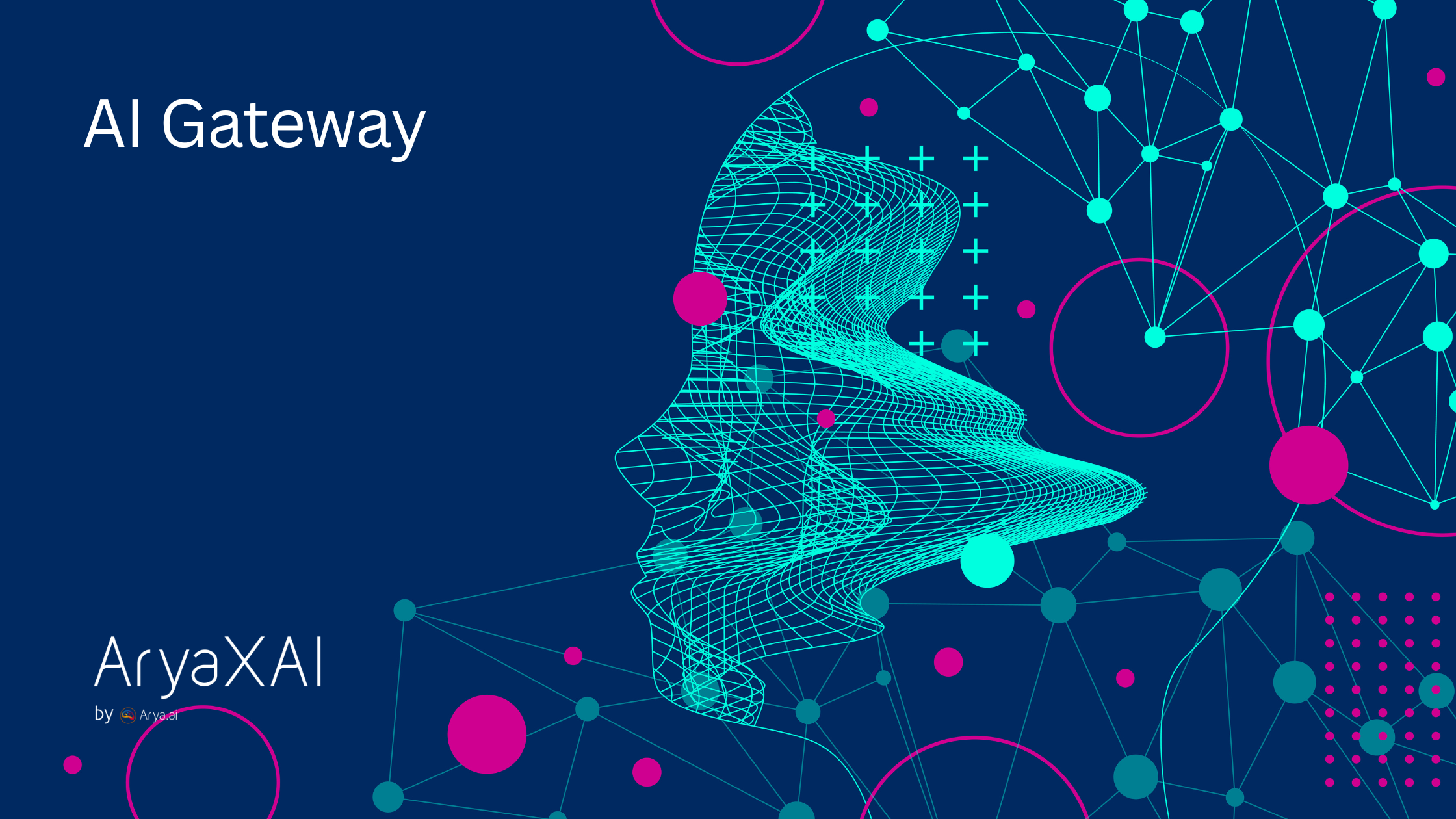Smarter AI Agents with Middleware
October 21, 2025

AI agents are becoming more capable every day — they can plan tasks, use tools, summarize documents, or even hold long conversations. But as they get more powerful, they also get harder to control. Sometimes the model forgets important context, picks the wrong tool, or produces answers that don’t fit your workflow. That’s where middleware comes in.
Middleware gives developers and teams a way to guide, monitor, and shape how an AI agent behaves — without rewriting everything from scratch. Think of it like adding layers of logic around your AI’s brain. Each layer can make the agent smarter, safer, or more efficient.
In this blog, we’ll explore what middleware is, why it matters, and how it makes AI agents more reliable and easier to manage.
Why Basic AI Agents Fall Short
Most AI agents follow a very simple loop — the user gives an instruction, the model decides what to do, it might use a tool or generate a reply, and then the cycle repeats. This pattern works for small, contained tasks, but once agents start dealing with complex, real-world scenarios, cracks begin to appear.
Here’s why:
- Losing Track of Context
As conversations or tasks get longer, agents tend to forget earlier information. They might lose sight of important details, repeat earlier steps, or give answers that no longer fit the situation. Without an intelligent way to summarize or manage what’s already happened, the agent’s responses can drift off-track, making interactions confusing or inconsistent. - No Way to Intervene
In real-world use, you often need to pause and review what the AI is doing — maybe to approve an action, fix an error, or adjust its reasoning. However, most agent designs don’t allow for this. Once the loop starts, it just runs from input to output with no built-in checkpoints, leaving humans with little visibility or control. - Hard to Customize
Every organization operates differently. Some need human approval before certain actions, others require strict logging, safety validation, or restricted tool use. Trying to force all these requirements into a single agent design usually leads to messy code, where every new rule breaks something else. It becomes difficult to maintain or scale. - Not Built for Scale
As agents grow from simple chatbots to parts of larger systems — interacting with APIs, databases, or multiple users — their structure needs to evolve too. Basic loop-based designs aren’t modular or predictable enough for these environments. Without a clear structure to manage complexity, the agent’s performance and reliability suffer.
This is where middleware makes a real difference. It brings structure, flexibility, and control to AI agents, allowing them to handle real-world challenges without becoming unmanageable.
What Is Middleware for AI Agents?
Middleware is an intentionally simple idea with big impact: it’s a set of independent layers that sit around the agent’s decision process and can watch, change, or augment what the agent does without touching the agent’s core logic. Think of the agent’s brain as a black box that takes input and produces output; middleware gives you safe, predictable places to inspect and influence that pipeline. Because each middleware component is separate, you can add, remove, or reorder them as your needs change.
How does it actually work?
Before the model is asked to think, middleware can prepare the input—cleaning up, summarizing, or enriching it. While the model request is being built, middleware can tweak the wording, choose a faster or cheaper model, or inject extra instructions for that single call. After the model responds, middleware can validate the output, block or alter risky actions, log the result, or hand the result to a human for approval. These touchpoints give you control at three natural moments: before thinking, while requesting, and after answering.
Concrete examples that make the idea stick
• Context summarizer: When a chat gets long, this middleware compresses earlier messages into a short summary so the model remembers the essentials without using up the token limit.
• Safety filter: After the model returns text, this layer checks for disallowed content or unsafe actions and either sanitizes the output or prevents the agent from acting.
• Human approval gate: If the agent tries to perform a sensitive tool action (like sending money or deleting data), this middleware pauses the workflow and asks a person to confirm.
• Cache or reuse layer: For common questions, this middleware returns a stored answer instead of calling the model again, saving time and cost.
• Dynamic tool selector: Based on user permissions or conversation context, this piece enables or disables certain tools so the agent can’t use features it shouldn’t.
Why is middleware better than stuffing logic into the agent?
Putting all rules and checks inside the main agent loop quickly becomes tangled and fragile. Middleware separates concerns: one component does summarization, another handles approvals, another logs activity. That separation makes each part easier to test, reuse, and maintain. It also makes the agent more predictable—because middleware executes in a clear order you can reason about how an input will be transformed into an action.
Imagine an office workflow where a form passes through desks. One person checks for completeness, another summarizes long attachments, a third applies a policy check, and a manager signs off if needed. Each desk has a single responsibility and can be replaced without redesigning the whole office. Middleware is the same idea for AI agents.
In short, middleware gives you clean, modular control over what an AI agent sees, how it asks for answers, and what happens to those answers. It turns a single monolithic loop into a composed pipeline you can understand, govern, and evolve
How Middleware Works?
Middleware works by hooking into specific “pause points” in an AI agent’s workflow. These are moments where the agent is either about to think, building a request, or has just received a response. By inserting logic at these points, middleware can guide, adjust, or monitor the agent’s behavior without altering the core loop.
- Before the Model Thinks
This step, often called before_model, occurs just before the agent sends its input to the model. Middleware at this stage can prepare the input so the model gets exactly what it needs to perform well. For example:- Summarize long chat history: Compress previous conversation or task data so the model doesn’t lose context while staying within token limits.
- Add user-specific data or preferences: Include personalized instructions or metadata to tailor the output.
- Skip unnecessary steps: If the answer is already known or a shortcut exists, the agent can bypass extra processing, saving time and resources.
- While the Model Is Thinking
This is the modify_model_request step. Here, middleware can change the request being sent to the model without altering the agent’s underlying logic. Examples include:- Switching models: Choose a faster or cheaper model for simple queries while reserving advanced models for complex tasks.
- Rephrasing prompts: Slightly adjust instructions or questions to improve clarity or performance.
- Injecting temporary instructions: Add guidance that only applies to this particular model call without affecting future interactions.
- After the Model Responds
Known as after_model, this hook occurs right after the model has produced an output but before the agent executes any actions. Middleware can review and validate the response, ensuring safety and relevance. Examples include:- Human approval checks: Pause actions like sending emails, making payments, or deleting data until a person approves.
- Logging for transparency: Track the agent’s decisions for auditing, analysis, or debugging.
- Blocking unsafe actions: Detect content or commands that could cause errors or breaches and stop them before execution.
Each middleware layer operates independently and can be stacked in any order. You can add, remove, or reorder layers without breaking the main agent, giving you modular control and flexibility over the agent’s behavior while keeping the core logic clean and maintainable.

Why Middleware Makes AI Agents Better
Middleware transforms AI agents from simple loops into structured, modular systems. By separating responsibilities into independent layers, it improves manageability, reliability, safety, and scalability. Here’s a detailed look at how it enhances agent behavior:
- Easier to Manage
Traditional agents often become cluttered when all logic—context handling, tool execution, safety checks—is crammed into one large function. Middleware allows you to break down these responsibilities into distinct, reusable layers. For example, one layer can focus on summarizing conversation history, another can handle human approvals, and another can manage logging or monitoring. Each middleware component performs a single, clear task, making it easier to maintain, update, and debug the system without risking unintended side effects on other parts of the agent. - More Reliable
By controlling what happens before and after every model call, middleware reduces unexpected behaviors. You know exactly when the agent’s context is summarized, when checks are performed, and when outputs are validated. This predictability is crucial for complex workflows, where a missed step or inconsistent handling could lead to incorrect actions. Middleware ensures that the agent behaves consistently across tasks, improving overall reliability and trustworthiness. - Safer by Design
Safety is one of the biggest concerns when deploying AI agents in real-world applications. Middleware allows you to introduce safety mechanisms without touching the core agent logic. For instance, you can block sensitive commands, pause high-risk actions until human approval is given, or filter out potentially harmful content before it reaches external systems. By embedding these safety layers outside the main loop, you reduce the risk of accidental errors while maintaining a clean, functional agent core. - Scales to Real Workflows
Middleware makes agents adaptable to real-world, production-grade workflows. Whether the agent is handling customer support queries, automating repetitive tasks, assisting research, or interacting with multiple systems, middleware allows you to add features progressively. You can introduce analytics layers to track performance, caching layers to optimize repeated requests, or specialized layers to handle compliance rules. This flexibility ensures that as your workflow grows or changes, the agent can scale seamlessly without major redesigns.
In short, middleware provides a structured, modular framework that improves clarity, predictability, and safety, while making it easier to extend and scale AI agents for real-world use cases.
Conclusion
Middleware brings order and flexibility to AI agents. Instead of building one giant loop that tries to do everything, you build small, reusable layers that each handle a part of the process.
This approach makes agents more understandable, maintainable, and safe. It lets you control how they think and act — whether that means summarizing context, switching models, or asking for human approval before taking action.
As AI continues to move from experiments to production systems, middleware will be the backbone that keeps agents stable, efficient, and trustworthy.
SHARE THIS
Discover More Articles
Explore a curated collection of in-depth articles covering the latest advancements, insights, and trends in AI, MLOps, governance, and more. Stay informed with expert analyses, thought leadership, and actionable knowledge to drive innovation in your field.

Is Explainability critical for your AI solutions?
Schedule a demo with our team to understand how AryaXAI can make your mission-critical 'AI' acceptable and aligned with all your stakeholders.



.png)




















